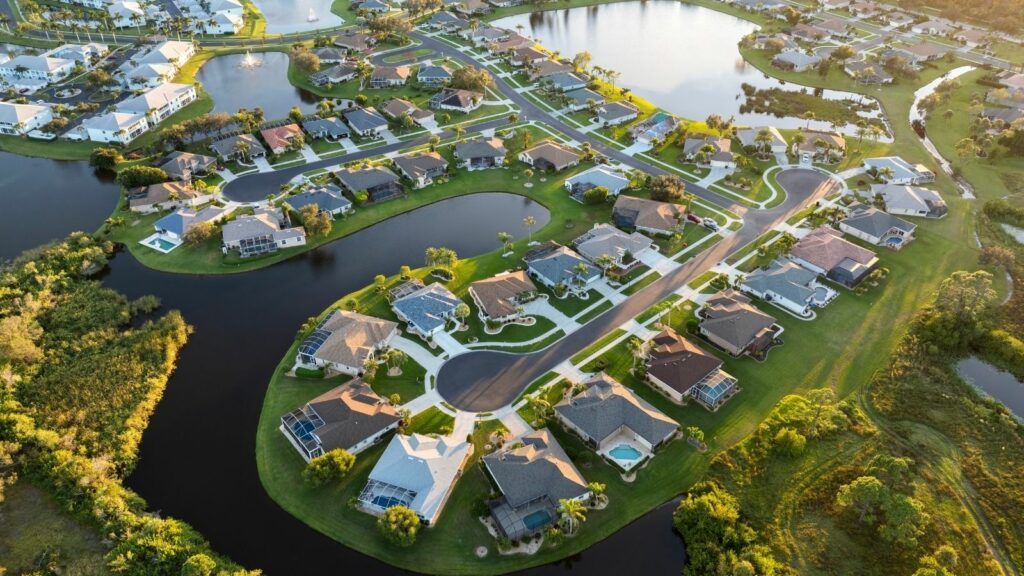The dream of suburban life, with its neatly trimmed lawns, spacious homes, and quiet streets, has long been a hallmark of the American ideal. For decades, families flocked to suburban areas, drawn by the promise of safety, good schools, and a sense of community.
However, a growing number of families are now leaving suburbia, seeking new opportunities and lifestyles that better align with their evolving values and needs. Here are 19 eye-opening reasons families choose to leave the suburbs behind.
Cost of Living

With the changing world, the cost of living in suburban areas has also increased. Suburban houses were coveted for being affordable. However, residents are now burdened with the cost of housing, property taxes, and maintaining a suburban lifestyle, which is why families are leaving suburbs behind.
Desire for More Space

Another reason suburban housing is not being considered anymore is that families seek more space to satisfy their needs. Suburban houses are bigger than city apartments, but residents now wish for more outdoor spaces. Trends such as home-schooling and remote work have contributed to this.
Environmental Concerns

Families are becoming responsible for their carbon footprint, with the world on the brink of environmental collapse. Suburban lifestyles heavily depend on cars and high energy consumption, adversely affecting the environment. That’s why families are now looking for more sustainable communities where they can live in harmony with nature.
Urban Amenities

For some families, enjoying urban amenities like restaurants, cultural attractions, and entertainment options is more attractive than the calm of a suburban lifestyle, thus contributing to their choice to pursue a city lifestyle.
Reduced Commute Times

With remote work becoming more common these days, families no longer desire a lengthy commute from the suburbs to their workplace. Moreover, the time wasted in these commutes can be better utilized in spending time with family, pursuing hobbies, or exercising, which the families are now making a priority. Thus, it becomes another reason why the suburbs no longer appeal to most families.
Diverse Communities

Some families wish to always be exposed to new cultures, traditions, and ideas so that they can learn and grow. Such families prioritize cities and smaller urban areas, which are more diverse and inclusive than the traditionally homogeneous suburbs.
Changing Family Dynamics

Modern family dynamics have evolved compared to the past. Most households are either single-parent, dual-income, or living with non-traditional arrangements. On the other hand, the suburban household model is for the nuclear family, which can’t accommodate these modern family dynamics.
Access to Better Healthcare

For families in need of special medical attention, urban areas are the best places to reside. Urban life offers better access to healthcare facilities and specialists, which attracts people seeking high-quality care. Thus, it is becoming a deciding factor for leaving the suburbs behind.
Proximity to Higher Education

Urban living has a significant advantage for families with school- and college-bound children. Urban areas have a higher number of educational institutions that are also better equipped with modern technologies, which is highly attractive for families that prioritize education.
Cultural and Recreational Opportunities

Suburbia doesn’t always have the cultural and recreational opportunities found in cities or rural areas. Therefore, families that wish to enjoy museums, theatres, parks, and other cultural experiences leave suburban life behind.
Better Public Transportation

Life in the suburbs requires a vehicle for everyday transportation, which harms the environment and is unaffordable for many families. However, cities have a robust public transit system which appeals to most families.
Changing Work Preferences

The rise of remote work and flexible job arrangements has led to families choosing a cozy small town or the countryside. This way, they can live as one with nature while also earning a livelihood. Because of this, suburbia is not the top priority of most families.
Desire for Community

In the past, suburbs were known for their close-knit communities. However, these days, the situation is quite the opposite. Thus, families pursuing a stronger sense of belonging opt for urban neighborhoods, rural towns, or intentional communities focused on shared values.
Educational Alternatives

While suburbs do have educational institutions, many families lack educational alternatives from which their children can benefit. Therefore, the need for Montessori schools, charter schools, or homeschooling communities makes the parents choose other areas—where these opportunities are available—over suburbia.
Safety Concerns

Suburbs are often portrayed as safer than cities, but this is not always true. The appeal of strong community policing in urban or rural areas with lower crime rates attracts most families, leaving suburbs behind.
Desire for Adventure

Another reason families are choosing other areas to reside in is the desire to escape the monotony of suburban life. Many families wish for a change, and the sense of adventure that moving to a different part of the country or exploring life abroad provides. Thus, the excitement to explore the unknown drives their choice of residency.
Political and Social Climate

The political and social climate of an area becomes a driving factor in most families’ decision-making process. If a family’s political and social views do not align with the area where they live, they feel uncomfortable and suffocated. Thus, families seek areas where they share the same social and political views as the local community.
Access to Nature

The parks and green spaces of suburban areas are often insufficient for most families. The desire to be deeply connected to nature, which the rural areas provide, attracts most families. Similarly, cities with extensive parks also appeal to such families.
Changing Priorities

Last but not least, most families’ priorities have changed, which is another reason why they are saying goodbye to suburbia. The focus has now shifted to sustainability, a desire for more diverse experiences, and a lifestyle tailored to the families’ values. Thus, families seek places to live where they can have what suburbia can’t provide.
Conclusion

The decision to leave suburbia behind is not an easy one but becomes necessary when the suburban lifestyle no longer aligns with the family’s values. A life in the suburbs used to be the dream of many, but shifting societal norms and family dynamics prompted many families to seek life elsewhere. If you’re also one of such families, make the move and strive for a more fulfilling lifestyle.
5 Canadian Provinces Predicted to Thrive in the Next Economic Boom
 To thrive in an economic boom, a region needs good infrastructure, talented people, government policies that support growth and uplift the economy, and a culture of entrepreneurship. Often, the demography can also be a significant indicator of a region’s economy in the next few years. Although reports may vary on which regions will perform the best economically, certain regions come up on every list. Here are 5 Canadian provinces predicted to thrive in the next economic boom:
To thrive in an economic boom, a region needs good infrastructure, talented people, government policies that support growth and uplift the economy, and a culture of entrepreneurship. Often, the demography can also be a significant indicator of a region’s economy in the next few years. Although reports may vary on which regions will perform the best economically, certain regions come up on every list. Here are 5 Canadian provinces predicted to thrive in the next economic boom:
5 Canadian Provinces Predicted to Thrive in the Next Economic Boom
